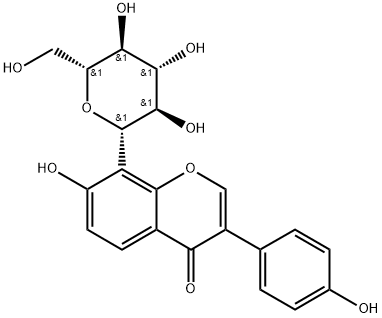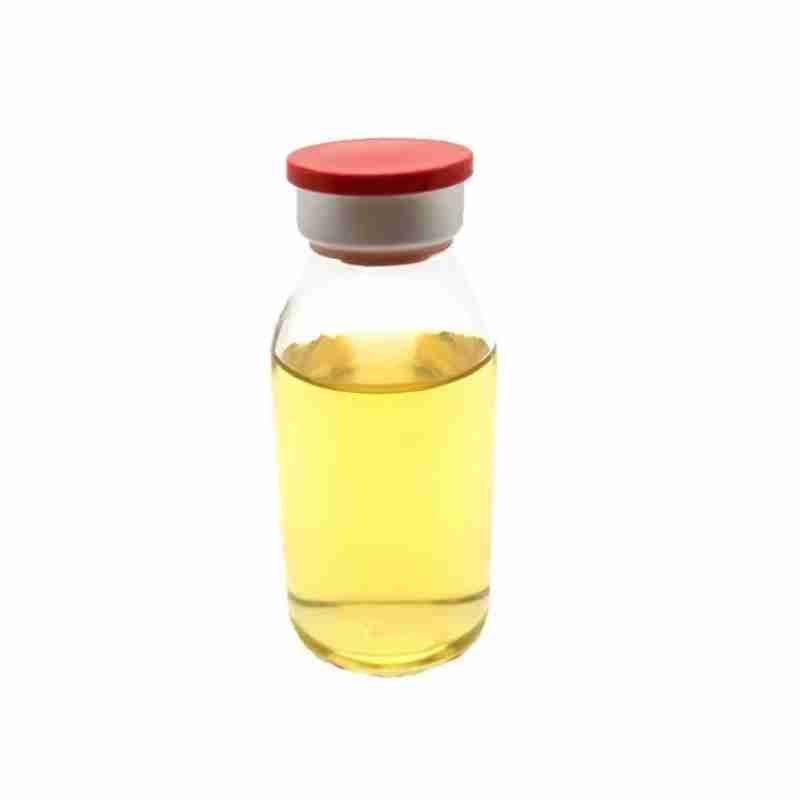Puerarin CAS# 3681-99-0
Puerarin, also known as pueraria flavonoids, is a kind of flavonoid glycoside extracted from the roots of Pueraria alba or Pueraria thomsonii and is also one of the main effective ingredients of Pueraria lobata. That Pueraria lobate was used to treat diseases has already been recorded in China??s ancient medical books such as Shen Nong??s Materia Medica, Treatise on Miscellaneous Diseases and Medical Dictionary.
Kanzu root is widely distributed in our country and of rich resources. It has been reported that puerarin could be extracted from Pueraria lobata (Wild.) Ohwi, Radix Pueraria thomsonii, Pueraria omeiensiswanget Tang, Pueraria edulis Pamp and Pueraria phaseoloides, but the content of puerarin differs.
Pueraria has a great value for nutrition and medicine and was considered the south ginseng of China. Puerarin has been widespread concerned over our country for its use of food and medicine in recent years.
发送询盘
Puerarin CAS# 3681-99-0
| Puerarin Basic information |
| Product Name: | Puerarin |
| Synonyms: | Puerain;PUERARIN(P);8-beta-d-glucopyranosyl-7-hydroxy-3-(4-hydroxyphenyl)-4h-1-benzopyran-4-on;Puerqarin;PUERARIN WITH HPLC;PUERARIN;8-GLUCOSYLDAIDZEIN;7-HYDROXY-3-[4-HYDROXYPHENYL]-1-BENZOPYRAN-4-ONE 8-[BETA-D-GLUCOPYRANOSIDE |
| CAS: | 3681-99-0 |
| MF: | C21H20O9 |
| MW: | 416.38 |
| EINECS: | 609-296-1 |
| Product Categories: | natural product;Inhibitors;Iso-Flavones;chemical reagent;pharmaceutical intermediate;phytochemical;reference standards from Chinese medicinal herbs (TCM).;standardized herbal extract;Herb extract;Natural Plant Extract;3681-99-0 |
| Mol File: | 3681-99-0.mol |
 |
|
| Puerarin Chemical Properties |
| Melting point | 187-189??C |
| Boiling point | 688.0??55.0 ??C(Predicted) |
| density | 1.614??0.06 g/cm3(Predicted) |
| storage temp. | 2-8??C |
| solubility | DMSO (Slightly), Methanol (Slightly) |
| pka | 6.46??0.20(Predicted) |
| form | Powder |
| color | White to Off-white |
| Water Solubility | Soluble in DMSO or DMF. Slightly soluble in water or ethanol |
| ??max | 303nm(MeOH)(lit.) |
| BRN | 64198 |
| InChIKey | HKEAFJYKMMKDOR-NCHCSYJDSA-N |
| SMILES | OC1=CC=C2C(C(C3C=CC(O)=CC=3)=COC2=C1[C@H]1[C@@H]([C@@H](O)[C@H](O)[C@@H](CO)O1)O)=O |&1:18,19,20,22,24,r| |
| LogP | 0.408 (est) |
| CAS DataBase Reference | 3681-99-0(CAS DataBase Reference) |
| Safety Information |
| Hazard Codes | F,C |
| Risk Statements | 11-34 |
| Safety Statements | 22-24/25-45-36/37/39-26-16 |
| WGK Germany | 3 |
| RTECS | UO5216000 |
| F | 10 |
| HS Code | 29389090 |
- 2
- 2-diallylpent-4-en-1-amine
- 4
- 95-16-9
- Ammonium sulfamate
- Benzothiazole
- cas:67889-00-3ح2
- cas:83524-75-8 | pigment black 32
- cas:928836-00-4 | 2
- cas:932745-70-5 | 4
- Chemical Minerals
- Coconut diethanolamide
- Daily Chemicals
- discount
- for sale
- General pvc resin
- hexyl D-glucoside
- in stock
- Lauramidopropyl betaine
- LAURIC ACID MONOETHANOLAMIDE
- Petroleum Additives
- Plasticiser
- Ploymers
- price
- PVC
- quotation
- Raw Materal
- Remove term: Petroleum Additives Petroleum Additive
- SODIUM ETHYL 2-SULFOLAURATE
Related Products
Chemical Name: Arabic gum
CAS No.: 9000-01-5
Appearance: powder
Olive Oil, with a Chemical Abstracts Service (CAS) number of 8001-25-0, is a natural fruit oil obtained from the olive tree. It is renowned for its rich flavor, nutritional benefits, and versatility in culinary uses.
Common English name: 5-iodo-2,3-dihydropyridazin-3-one
CAS No.: 825633-94-1
Molecular formula: C4H3IN2O
Molecular weight: 221.98
Sample: Available
Chemical Name: UV-120
Other Name: (2’,4’-Di-tert-butylphenyl 3,5-di-tert-butyl-4-hydroxybenzoate)
CAS No.: 4221-80-1
Molecular Fomula: C29H42O3
Molecular weight: 438.66
Assay: ≥99%(LC)
Chemical Name: Ashwagandha Extract
Synonyms: Withania somnifera, ext.; Withania Somnefera Extract
CAS: 90147-43-6
Appearance: Brown
Huperzine A is a natural plant extract. Compared with similar AD treatment drugs approved by the US FDA, Huperzine A has a unique chemical structure and has extremely high selectivity to inhibit acetylcholinesterase in the brain and enhance cholinergic in the brain. function of neurons. In addition, Huperzine A has obvious effects on improving memory and improving cognitive ability.
Huperzine A has a small relative molecular weight, high lipid solubility, and is easy to pass through the blood-brain barrier. After entering the central nervous system, it is mostly distributed in the frontal lobe, temporal lobe, hippocampus and other parts of the brain. Its pharmacological effects have multiple targets. In addition to inhibiting the activity of acetylcholinesterase, it can also antagonize oxidative stress and apoptosis induced by ??-amyloid peptide (A??), hydrogen peroxide and other neurotoxins, by activating the protein kinase C (PKC) signal transduction pathway. Activation of ??-secretase promotes the decomposition of ??-amyloid precursor protein (APP) in a non-amyloidogenic manner to produce sAPP??, reducing A??-mediated toxicity, while sAPP?? can effectively promote cell proliferation, axonal growth, and protect nerves. cell.
Chemical Name: Imazalil Sulfate
CAS No.: 58594-72-2
Molecular Formula: C14H14Cl2N2O.H2SO4
Molecular Weight: 395.26
Appearance: Solid
Chemical Name: Reishi Mushroom Extract
CAS No.: /
Molecular Fomula: C16H23O15
Chemical Structure: /
Molecular weight: /
Appearance:Brown powder
Chemical Name: Choline salicylate
CAS No.: 2016-36-6
Molecular Formula: C12H19NO4
Molecular Weight: 241.28
Appearance: Red-Brown Crystal
Hydroxytyrosol, a potent antioxidant polyphenol derived from olives, is celebrated for its health-promoting properties. Highly valued in the nutraceutical, cosmetic, and pharmaceutical sectors, it contributes to the development of products that support well-being and skin health.
Chemical Name: Dehydrocholic acid
Synonyms: Acide dehydrocholique; Triketocholanic acid
CAS No.: 81-23-2
Molecular Formula: C24H34O5
Molecular Weight: 402.53
Appearance: Powder


















